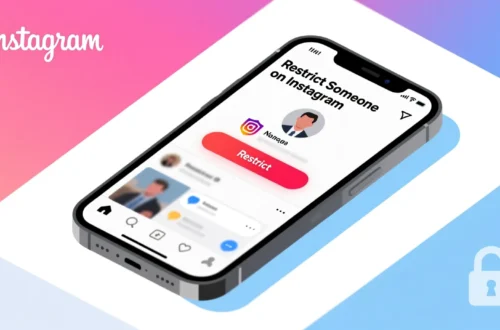A Smile That Speaks a Thousand Words
I’ll never forget the first time I traveled abroad. Stepping off the plane in Tokyo, I nervously muttered “Konnichiwa” to a passing stranger. To my surprise, their face lit up with a warm smile. That single word bridged the gap between us—two strangers from different worlds, connected by a simple greeting.
“Hello” might seem like just a word, but it’s a universal key that opens doors to human connection. Every culture has its own way of saying it, each carrying unique emotions, histories, and traditions. Let’s explore how this simple yet powerful word is spoken across the globe and what it reveals about humanity’s shared spirit.
How to Say “Hello” in Different Languages
| Language | Word/Phrase | Cultural Insight |
|---|---|---|
| English | Hello / Hi | Derived from “hallo,” an old Germanic call for attention. |
| Spanish | Hola | Often accompanied by a kiss on the cheek in many Latin cultures. |
| French | Bonjour | Literally means “good day,” reflecting politeness. |
| German | Hallo / Guten Tag | “Guten Tag” is more formal, used in professional settings. |
| Italian | Ciao | Can mean both “hello” and “goodbye,” showing Italian warmth. |
| Mandarin | 你好 (Nǐ hǎo) | The character 好 (hǎo) means “good,” symbolizing well-wishing. |
| Hindi | नमस्ते (Namaste) | A spiritual greeting with palms pressed together, honoring the divine in each person. |
| Japanese | こんにちは (Konnichiwa) | Used during the day; reflects Japan’s culture of respect. |
| Arabic | مرحبا (Marhaba) | Derived from “rahhaba,” meaning “to welcome” warmly. |
| Russian | Здравствуйте (Zdravstvuyte) | A formal greeting, literally wishing “health.” |
| Swahili | Jambo / Habari | “Jambo” is tourist-friendly, while “Habari” asks, “What’s the news?” |
| Zulu | Sawubona | Means “I see you,” acknowledging the other person’s presence. |
| Maori | Kia ora | Translates to “be well,” reflecting a holistic worldview. |
| Hawaiian | Aloha | More than a greeting—it embodies love, peace, and compassion. |
| Cherokee | ᎣᏏᏲ (Osiyo) | A traditional greeting that carries deep respect. |
European Languages: Politeness and Tradition
In Europe, greetings often reflect formality and history. The French “Bonjour” is a must in daily interactions, while Italians use “Ciao” casually among friends. Germans switch between “Hallo” (informal) and “Guten Tag” (formal), showing their structured social etiquette.
In Spain, “Hola” is often followed by physical affection—a kiss on the cheek or a warm embrace. Meanwhile, Russians use “Zdravstvuyte”, a mouthful that literally means “Be healthy,” showcasing their emphasis on well-being.
Asian Languages: Respect and Spirituality
Asia’s greetings are deeply tied to respect and philosophy. The Hindi “Namaste” is more than a word—it’s a gesture of reverence, acknowledging the soul in another. In Japan, bowing while saying “Konnichiwa” reflects hierarchy and humility.
Mandarin’s “Nǐ hǎo” is straightforward, but in Thailand, the “Wai” (a prayer-like gesture) accompanies “Sawasdee.” Arabic’s “Marhaba” carries warmth, often followed by inquiries about family, showing the culture’s emphasis on hospitality.
African Languages: Community and Connection
Africa’s greetings are vibrant and communal. Swahili’s “Jambo” is widely known, but locals prefer “Habari?” (“What’s the news?”), sparking conversations. In Zulu, “Sawubona” means “I see you,” emphasizing presence and acknowledgment.
Yoruba speakers say “Ẹ n lẹ” (Good day), while Amharic (Ethiopia) uses “Selam”, derived from peace. These greetings often lead to longer exchanges, reflecting Africa’s deeply social cultures.
Indigenous & Island Languages: Nature and Spirit
For Indigenous and island communities, greetings are tied to nature and spirituality. The Maori “Kia ora” means “Be well,” reflecting harmony with the earth. Hawaiians greet with “Aloha,” a word embodying love, compassion, and the breath of life.
In Native American Cherokee, “Osiyo” is a respectful hello, while Samoans say “Talofa”, symbolizing goodwill. These languages remind us that greetings are more than words—they’re blessings.
Cultural Insights: The Evolution of Greetings
Greetings have ancient roots. The English “Hello” only became popular with the telephone (thanks, Thomas Edison!). Meanwhile, “Namaste” dates back thousands of years in Sanskrit texts.
In some cultures, greetings involve touching foreheads (Mongolia), sniffing cheeks (Tuvalu), or even spitting (Maasai tribes). Each custom reveals deeper values—respect, trust, or tradition.
Proverbs About Greetings
- Swahili: “Heri kukaribisha mgeni kuliko kumwomba.” (“It’s better to welcome a guest than to pray for one.”)
- Chinese: “千里之行,始于足下” (“A journey of a thousand miles begins with a single step.”)
- Irish: “A hundred thousand welcomes” (“Céad míle fáilte”)—showing legendary hospitality.
FAQs About “Hello” in Different Languages
Q: Why do some greetings sound similar?
A: Many languages share roots (e.g., “Hallo” in German and “Hello” in English come from Old Germanic).
Q: What’s the oldest known greeting?
A: The Sanskrit “Namaste” (1500 BCE) is among the oldest still in use.
Q: Do all cultures shake hands?
A: No! Some bow, hug, or even press noses (like the Inuit “kunik”).
Conclusion: One Word, a World of Connection
No matter how we say it—Bonjour, Namaste, Sawubona, Aloha—the essence remains the same: a recognition of another soul. In a world that often feels divided, greetings remind us of our shared humanity.
Now it’s your turn! How do you say “hello” in your language? Share your favorite greeting in the comments—let’s celebrate our global connections!





